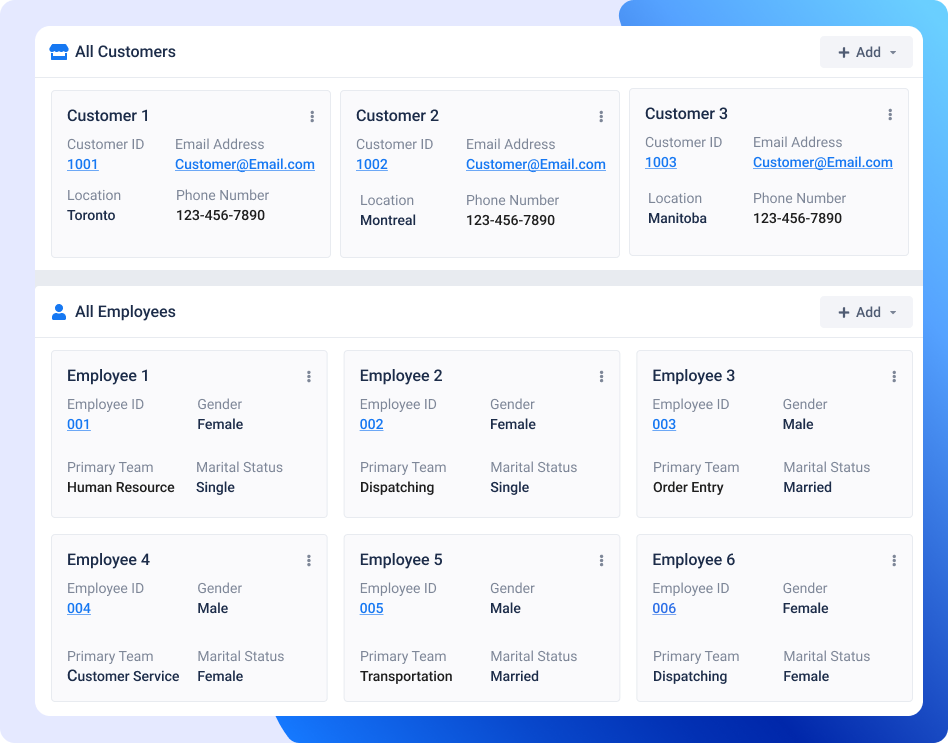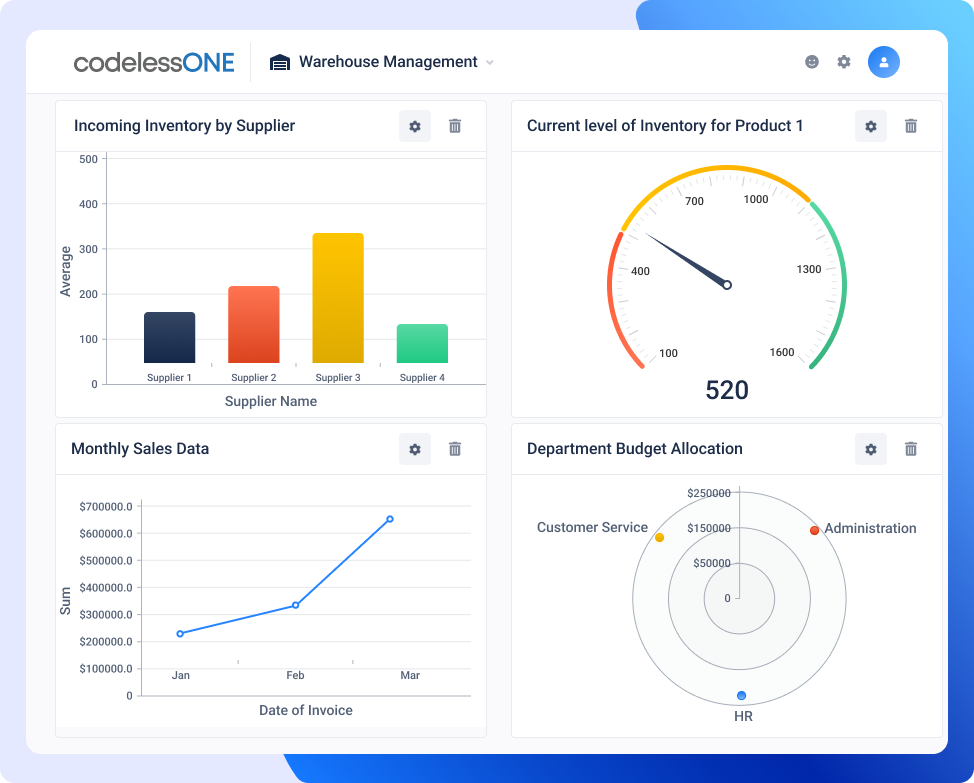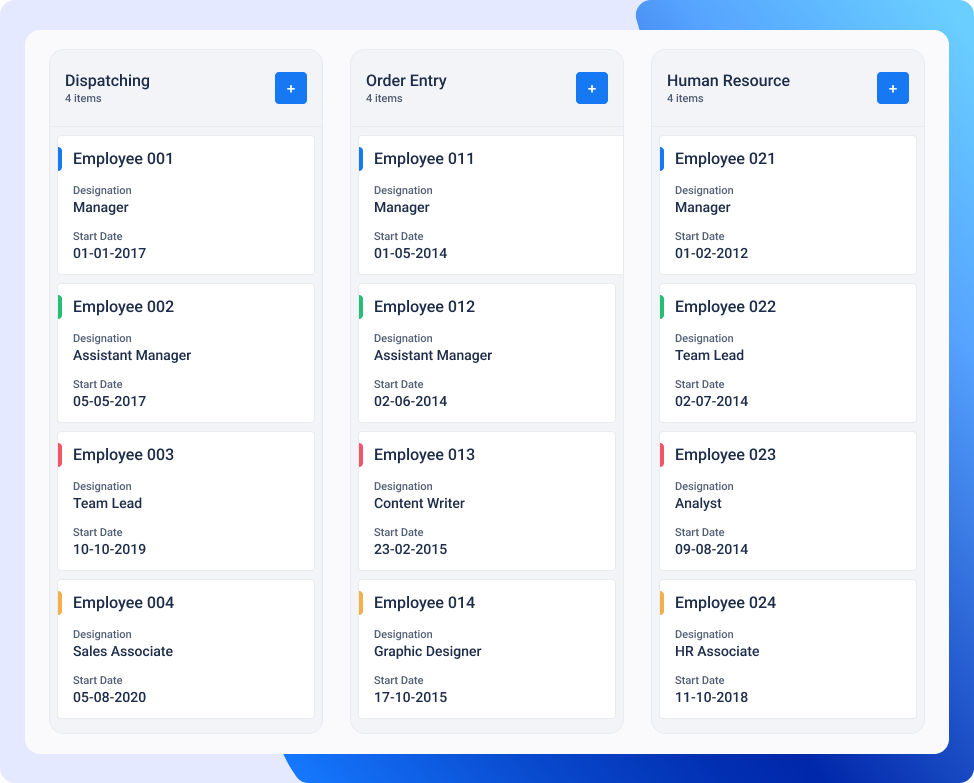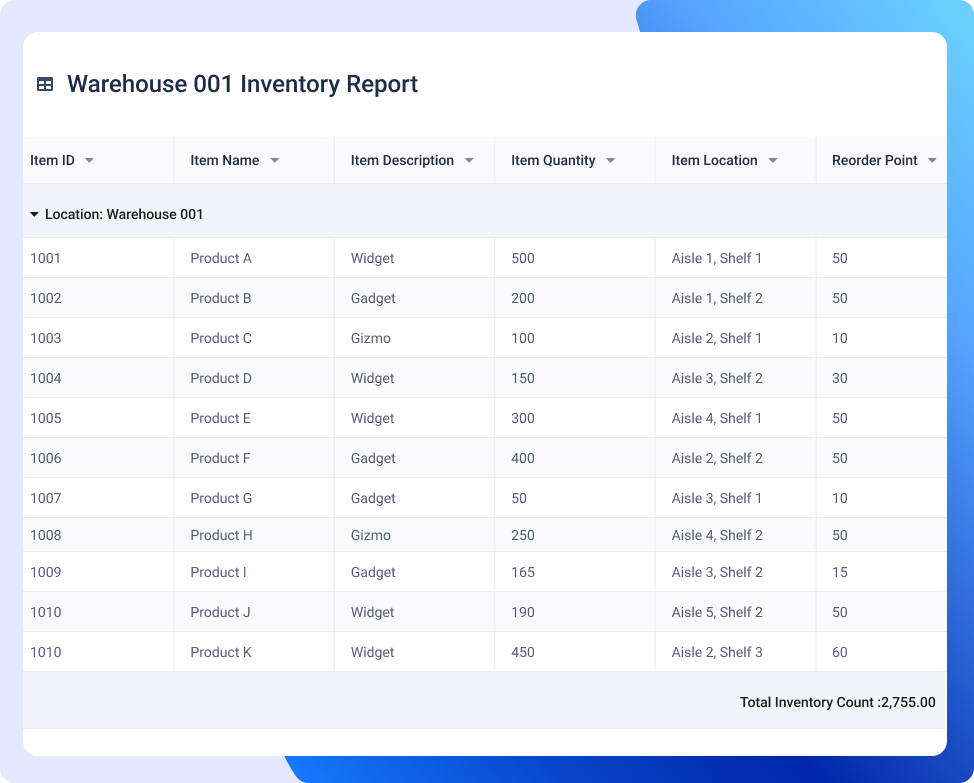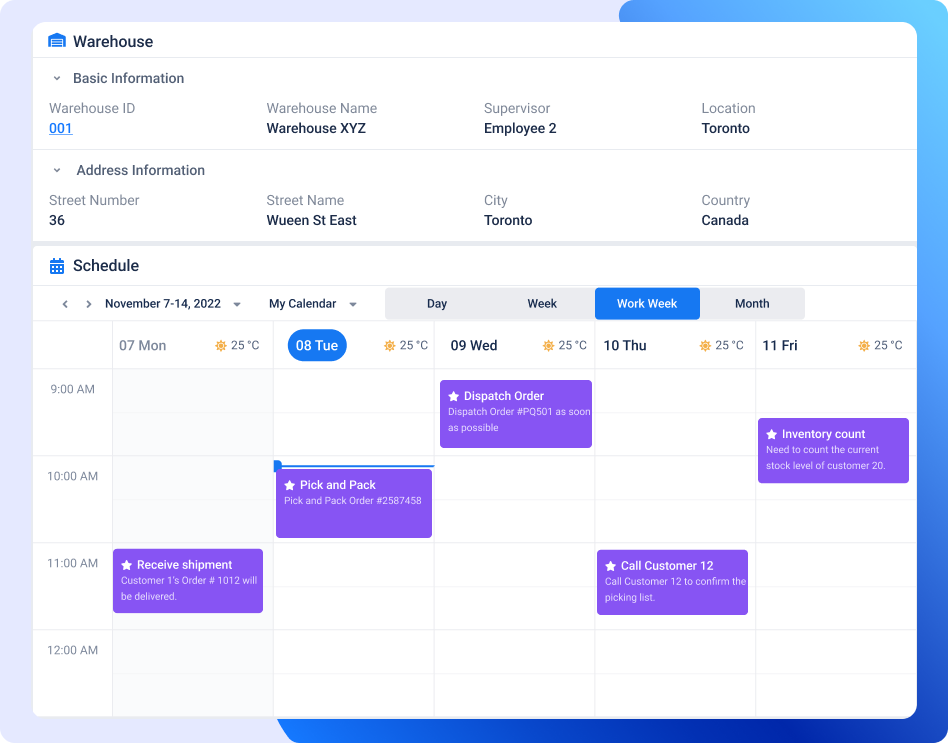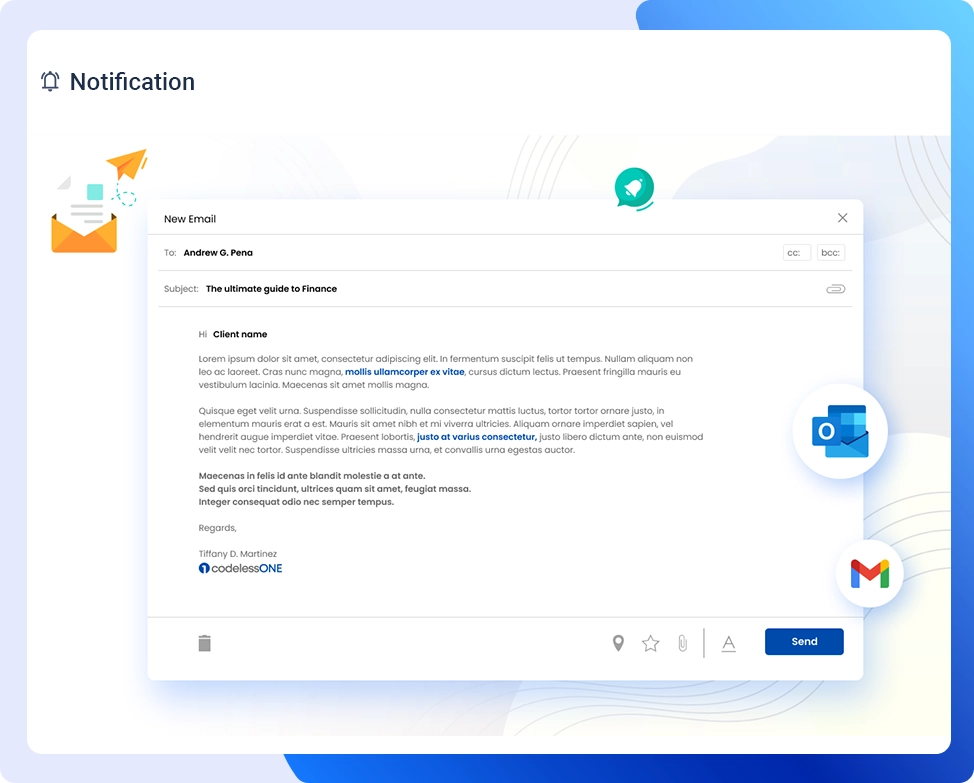Categories
A warehouse management application helps you manage and optimize your warehouse operations. It includes inventory management, order management, shipping and receiving, and reporting.
- Quickly view key warehouse metrics, such as inventory levels, shipping and receiving statistics, and order status.
- Quickly identify which products are most in demand, allowing for better allocation of resources.
- Monitor warehouse performance and efficiency in real-time.
- Track warehouse revenue and expenses, helping to identify areas for cost savings.
- Visualize and manage warehouse tasks and activities, allowing easy and efficient tracking.
- Easily identify which products are in demand, which are in low stock, and which are overstocked.
- Track the progress of warehouse tasks such as inventory counting, order picking, packing, and shipping.
- Set and track custom workflows, such as receiving, sorting, and restocking.
- Track warehouse data and performance in real-time, allowing for efficient management.
- Monitor and forecast demand for products, helping to optimize inventory management.
- Track the performance of individual employees, teams, or different warehouse facilities.
- Analyze product demographics, inventory levels, and order status.
- Easily view and plan for upcoming warehouse tasks and activities, such as inventory counts and receiving and shipping schedules.
- Quickly see when the warehouse is busiest, allowing for better management of resources and scheduling.
- Identify and plan for any scheduling conflicts or overlaps.
- Easily adjust the warehouse schedule as needed, such as rescheduling an inventory count or a receiving plan.
- Receive notifications when inventory levels are low, allowing for timely replenishment.
- Get alerts when an order is placed, allowing for efficient order management.
- Notify when a shipment is received, allowing for efficient receiving and inventory management.
- Receive notifications when a shipment is ready for pickup or delivery, allowing for prompt shipping.
Benefits and use cases of warehouse management application:
Inventory management:
Track inventory levels, replenish stock, and create purchase orders. Monitor warehouse performance and inventory levels in real-time, allowing for quick identification and resolution of issues.
Order management:
Manage customer orders, track order status, and plan for shipping and delivery.
Shipping and receiving:
Manage the inbound and outbound flow of goods and track the status of shipments.
Real-time monitoring:
Monitor warehouse performance and inventory levels in real-time, allowing for quick identification and resolution of issues.
Multi-warehouse and multi-location support:
Manage multiple warehouses and locations from a single platform, improving communication and coordination.





